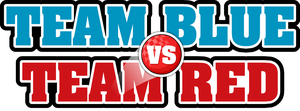This is an old revision of the document!
Using "Red Team vs. Blue Team" to Improve Quality
 The “red team vs. blue team” approach has long been used in military, security, cybersecurity, and business settings. It typically features a “red team” tasked with testing assumptions, identifying vulnerabilities, and role-playing from adversarial perspectives, to see whether a “blue team” can adequately defend prevailing ideas.
The “red team vs. blue team” approach has long been used in military, security, cybersecurity, and business settings. It typically features a “red team” tasked with testing assumptions, identifying vulnerabilities, and role-playing from adversarial perspectives, to see whether a “blue team” can adequately defend prevailing ideas.
Can this concept be applied to quality improvement?
The purpose of any robust Quality Management System (QMS) is to establish controls to identify and eliminate, or mitigate, risks to consistently fulfilling customer requirements and any established expectations (commitments) relating to the provision of products and/or services.
In the context of quality improvement, the “Red Team” would identify quality-related risks, which “Blue Team” would address (e.g., through developing controls to mitigate or eliminate those risks).
Creating your Teams
Red Team
The best people to identify risks are observant, analytical, critical thinkers who take pride in their work… and refuse to “cut corners”. Some managers hold and promote a completely delusional view of the world - which they mischaracterize as optimistic or “positive”. And these managers often mischaracterize anyone who recognizes “reality” as pessimistic or “negative” (always imagining the worst). Worse, some people are categorized as “pessimistic” or “negative” because while they can see the flaws (problems) they lack the:
- ability to articulate a solution, or
- problem-solving skills to develop a solution.
MANY well-educated optimistic/positive people lack these skills as well.
When I encounter a person (whether perceived as “positive” or “negative”) who lacks problem-solving skills, I teach them different “Cause and Effect Chain” (CEC) analysis methods (e.g., 5 Whys, Ishikawa (fishbone) diagrams, Apollo RCA, Fault Tree analysis). While this is NOT problem-solving, it gets us started in “defining” the specific problem(s) as to “why” something won't work. For simple problems, the solution will become obvious. For more complex problems, additional training is required (e.g., understanding and applying TRIZ).
To be clear, we aren't seeking pessimistic or “negative” people for “Red Team”, but rather people who are able to recognize and acknowledge “worse case” scenarios as possibilities. Red Team members must be able to clearly and specifically define each risk.
Blue Team
The best people to address risks are those who view themselves as “fixers”. People who enjoy the challenges of being a “problem-solver”. These “fixers” tend to be creative/inventive and able to “think outside the box” through exploring a variety of options. They're more concerned with finding the “best” solution rather than “being right”… and they welcome a critique of their proposed solutions.
The Tools
In order for each team to do its job, it must be equipped with the right tools.
Red Team Tools
Contrary to popular belief, “Brainstorming” is an incredibly poor “idea sourcing” methodology. And it is NOT a “solution-sourcing” methodology.
Some great tools, to begin with, include the Ishikawa (fishbone) diagram incorporating the “5 Ms” with an additional “M” for physical environmental conditions (“Mother Nature”). These six elements influence variation in virtually all processes—whether manufacturing or providing services.
Blue Team Tools
Some of the best problem-solving tools are some of the least known. For example, TRIZ provides a comprehensive “toolbox” for innovative problem-solving and continuous improvement.
You can learn more about TRIZ at:

